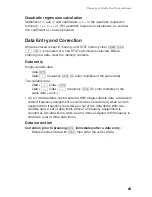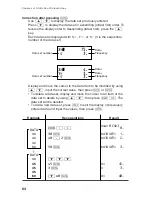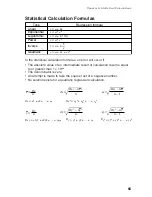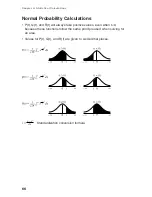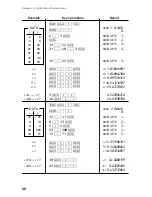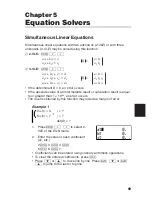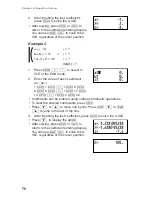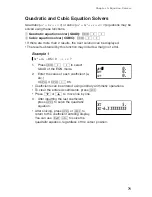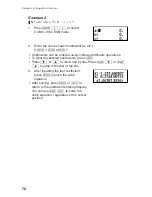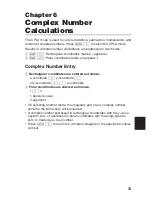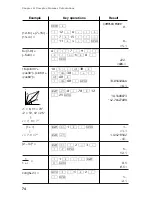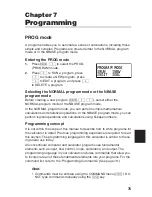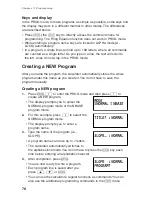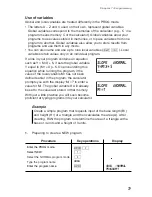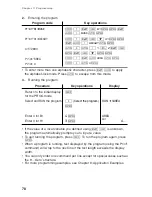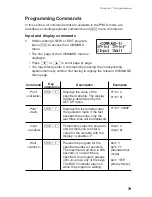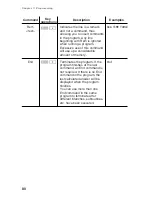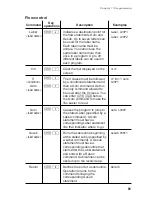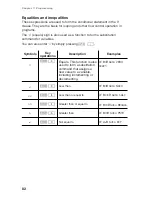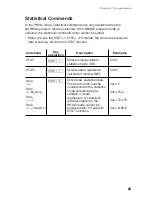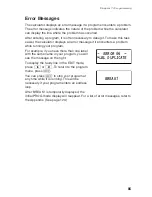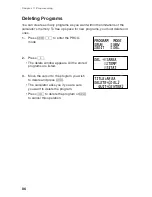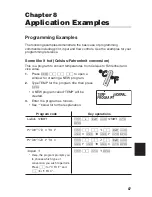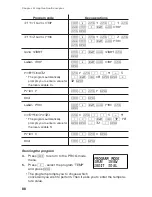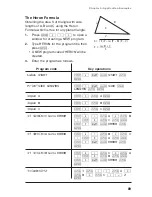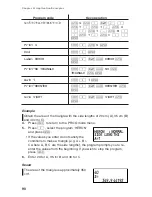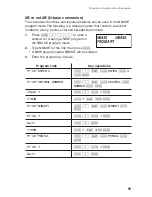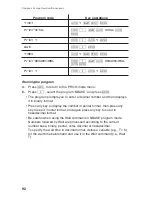
77
Chapter 7: Programming
Use of variables
Global and local variables are treated differently in the PROG mode.
• The letters A – Z and
θ
, used on their own, represent global variables.
Global variables correspond to the memories of the calculator (e.g., ‘C’ in a
program means memory C of the calculator). Global variables allow your
programs to use values stored in memories, or to pass variables from one
program to another. Global variables also allow you to store results from
programs and use them in any mode.
• You can also name and use up to nine local variables (
@
v
). Local
variables retain values only in an individual program.
If a line in your program contains an equation
such as Y = M
1
X + 5, it sets the global variable
Y equal to (M
1
×
X) + 5. On encountering this
equation while running the program, if the
value of the local variable M
1
has not been
defined earlier in the program, the calculator
prompts you with the display ‘M
1
=?’ to enter a
value for M
1
. The global variable X will already
be set to the value last stored in that memory.
With just a little practice you will soon become
proficient at typing programs into your calculator.
Example
Create a simple program that requests input of the base length (B
1
)
and height (H
1
) of a triangle and then calculates the area (A). After
creating, RUN the program to determine the area of a triangle with a
base of 4 units and a height of 3 units.
1.
Preparing to create a NEW program
SLOPE :NORMAL
Y=M¡X+5
_
SLOPE :NORMAL
M¡=?
Enter the PROG mode.
b
2
Select NEW.
Procedure
Key operations
Display
1
Select the NORMAL program mode.
0
e
Type the program name.
AREA
Enter the program name.
AREA :NORMAL
PROGRAM?
Summary of Contents for EL-5230
Page 1: ...PROGRAMMABLE SCIENTIFIC CALCULATOR OPERATION MANUAL EL 5230 EL 5250 ...
Page 2: ......
Page 12: ...10 ...
Page 62: ...60 ...
Page 132: ......

